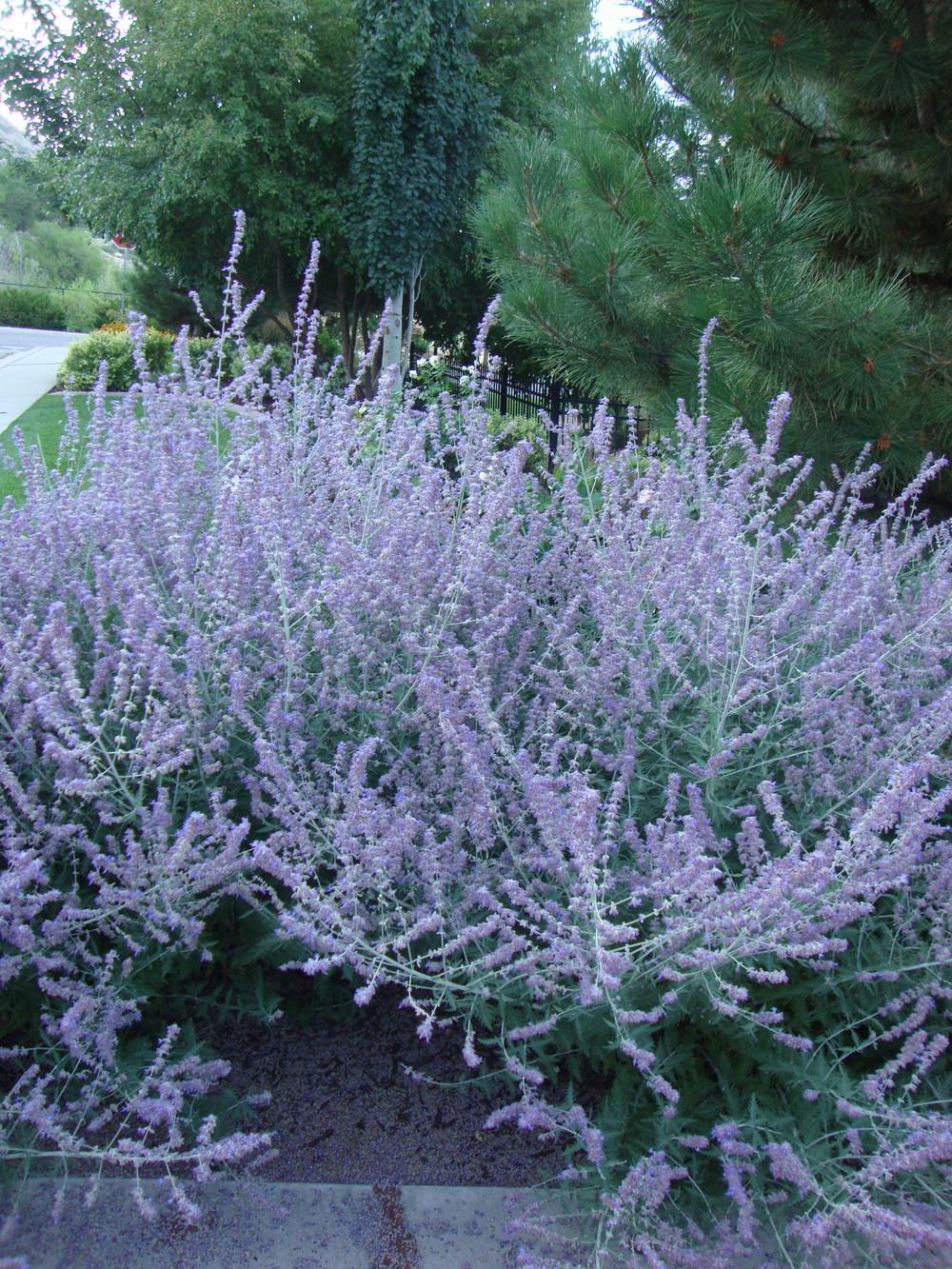Plants that don't require a lot of maintenance- check.
Variety, mixing annuals and perennials, trying different color schemes, and using plants in different ways. Check.
These 12 of my favorite perennials require little or no care for at least a few years. These are in no particular order. You can choose which ones will best fit your needs.

Hosta (Hosta spp.) - This shade lover is available in hundreds of different varieties growing from 2 inches to 4 feet in height. Most have heart shaped leaves but some are longer than wide. The leaves of some varieties are ruffled or ribbed; others smooth. Leaf colors range from various shades of green to chartreuse and blue-green, with an almost unlimited array of variegation in combinations with white, cream, and yellow. Small hostas are great in rock gardens. Some varieties work well in sun to part shade. Flowers are usually shades of purple, but may be white or yellow.
Coral Flower (Heuchera spp.) - A wide selection of plants that like sun or part shade. They flower late spring to early summer, but for many varieties leaves are the main attraction, with a variety of shapes, textures and colors, many with bold veins contrasting with the rest of the leaf. Plants range from 5-15 inches without flowers, which can add another 1-2 feet.
Columbine (Aquilegia spp.) - Species range in height from 6 inches to 4 feet tall. Showy, mostly bell-shaped, spurred flowers in numerous colors and combinations. They like full sun, except in the warmest climates where they appreciate a little shade. They are great for attracting hummingbirds.
Sedum (Sedum spp.) - Stonecrop is the common name for low growing varieties. Fleshy succulent leaves. Species and varieties from 2 inches to 2 feet. Some are evergreen with interesting red to purple winter color. They like full sun to partial shade. They attract butterflies.
Garden Pinks (Dianthus spp.) - With many new varieties, flowers range in color from white to red to purple and mixed. Some have colorful foliage. Many are very fragrant and do best in full sun. They do not like excess moisture and are best not mulched.
Tickseed (Coreopsis spp.) - Mostly low-growing varieties with some to 4 feet. Dozens of varieties with a wide range of colors. Some make great cut flowers. Finely textured leaves. Make good border plants.
Blanket Flower (Gaillardia spp.) - Another plant with many new varieties. Some at the 1-2 foot range, with others 3-4 feet. Many new colors and combinations with a long flowering season of single, double or semi-double flowers. They attract butterflies and can be grown in containers. There is also an annual gaillardia (G. pulchella).
Artemesia Silver Mound (Artemesia schmidtiana) - A very descriptive name for a plant with silvery leaves on a 10-14 inch mounded plant. It does best in full sun with good drainage. It is deer resistant.
Daylilies (Hemerocallis) - Hundreds of varieties now available; some say over 20,000 hybrids. Choose from varieties in just about any color and color combination save pure white and blue. Most bloom best in full sun. The more shade the more limited the blooming. Mixes well with numerous other plants.
Coneflower (Echinacea spp.) - Another plant with hundreds of new varieties. Broad color range of daisy-like flowers, with many new doubles. Height in flower is 2-5 feet with many at about 3 feet.
Baptisia (Baptisia australis) Also known as false indigo, this easy care perennial is covered with spikes of purple blue flowers for 3-4 weeks in late spring and early summer. Shrub-like in stature, its 3-4 feet tall and wide mound of blue-green leaves makes an attractive backdrop for later blooming plants for the rest of the season. Planted in full sun and well-drained soil, it will thrive for years without division. New hybrids offer a variety of flower colors, many two-toned.
About the only care any of these take after they are established is dividing when the clumps get too large. You can plan on increasing your number of plants by division every 3 to 5 years. Most of these plants will grow in just about any part of the country. Check with your local garden center to see what is available in your area.